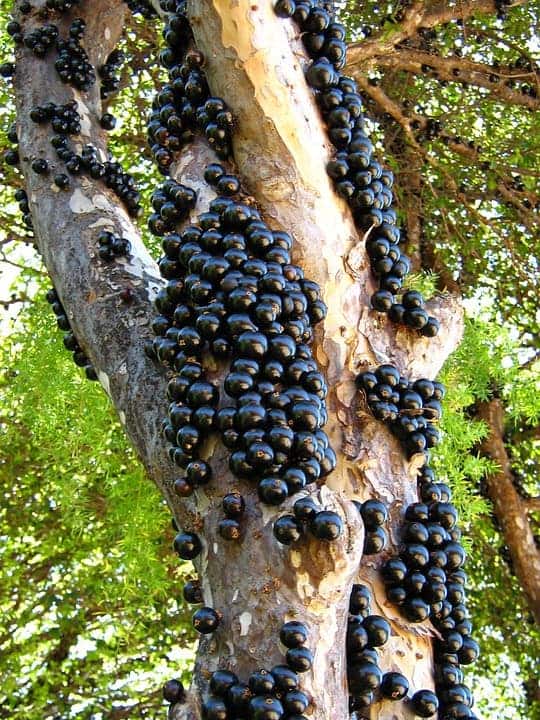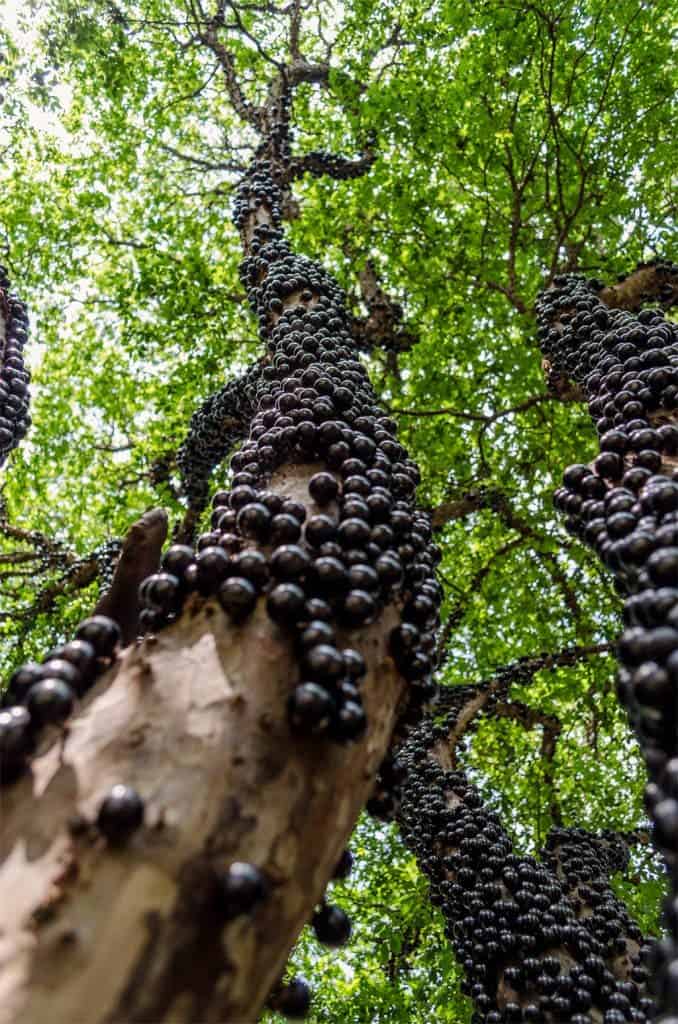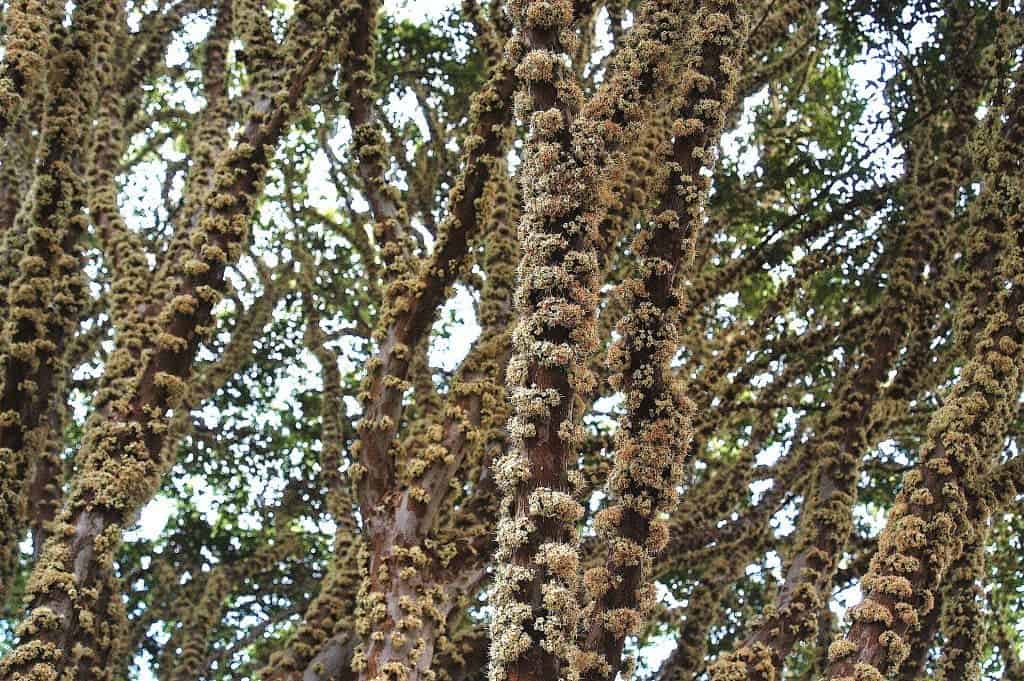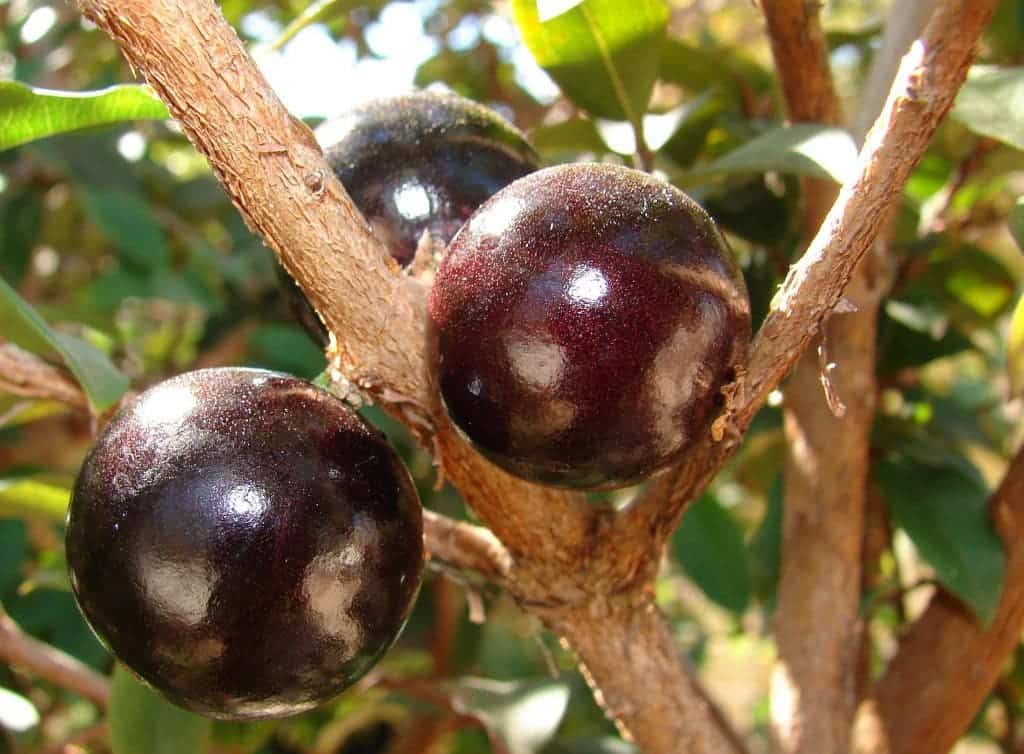You might think there’s something terribly wrong with this tree — but don’t worry, it’s absolutely fine! This is the Jabuticaba (Plinia cauliflora), also known as the Brazilian grape tree, and those weird growths are actually its fruit, which grows directly on its trunk and branches. It’s really tasty, too.
As the name suggests, the Brazillian grape tree grows mostly in Brazil; however, its range extends to Argentina, Chile, and Peru. The tree is a slow-growing evergreen with fruit available throughout the entire year. It’s safe to eat the berries raw and many locals use them to make jam.
Its fruit, which resembles a grape in appearance, is dark purple and has thick skin with a gelatinous white pulp inside. The flavor of the Jabuticaba berries has been described as a combination of grape and lychee, with a slightly acidic tang.
One of the most remarkable things about the Jabuticaba tree is the way in which it bears fruit. Unlike most fruit trees, which bear fruit on their branches, the Jabuticaba tree’s berries grow directly on its trunk. This unique feature has led some to call the Jabuticaba tree a “grape tree”.
The fruits are initially green, and only turn to this darkish color when they are ripe. The flowers themselves appear on the tree twice a year. The eerie white fuzz looks even stranger than the fruits.
Several potent antioxidant, anti-inflammatory, and anti-cancer compounds have been isolated from the fruit, including one that is unique to the fruit: jaboticabin.
But why did this tree evolve in this unique way?
The answer is probably pretty simple: to make it easier for animals who can’t climb to eat its fruit. The tree “wants” the animals to eat its fruit so that they can later expel the seeds away from the parent tree to grow even more Jabuticabas.
The etymology of the tree’s name is also pretty interesting. Jabuti is the Tupi word for tortoise, while caba means place, so Jabuticaba means something like ‘place of the tortoise’. It was likely called this way because the Brazilian giant tortoise (Chelonoidis denticulatus) enjoys eating fruits that fall to the ground.
It’s really no wonder that the Jabuticaba tree is an important cultural symbol in Brazil, where it is often featured in traditional folklore and is a popular ingredient in many local dishes and drinks. In addition to its cultural and nutritional significance, the Jabuticaba tree also has important ecological roles. Its fruit provides a vital food source for many animals, including birds, monkeys, and bats. The tree’s dense foliage also provides important habitat and shelter for a wide variety of wildlife.
You can also grow this tree in your own garden if you live in a tropical or subtropical climate; it prefers acidic soils and lots of water. All in all, the Jabuticaba is not only a remarkable tree but also a very tasty one — for humans and tortoises alike.
Now, time for some quick Jabuticaba recipes
- Jabuticaba Sorbet: This refreshing and tangy sorbet is the perfect way to cool off on a hot day. Simply blend Jabuticaba pulp with sugar and water, freeze in an ice cream maker, and enjoy!
- Jabuticaba Caipirinha: This Brazilian cocktail is a twist on the classic Caipirinha, featuring Jabuticaba pulp instead of lime. Muddle Jabuticaba pulp with sugar, add cachaça and ice, and stir for a delicious and unique cocktail.
- Jabuticaba Jam: Spread this sweet and tangy jam on toast or use it as a topping for yogurt or ice cream. Cook Jabuticaba pulp with sugar and lemon juice until thickened, then store in jars for later use.
- Jabuticaba Chutney: This savory and spicy chutney pairs perfectly with cheese, crackers, or grilled meats. Cook Jabuticaba pulp with vinegar, sugar, and spices such as ginger and cumin until thickened, then store in jars for later use.
- Jabuticaba Pudding: This creamy and indulgent dessert is a twist on traditional rice pudding, featuring Jabuticaba pulp and coconut milk. Cook rice and coconut milk with sugar and Jabuticaba pulp until thickened, then chill and serve.






